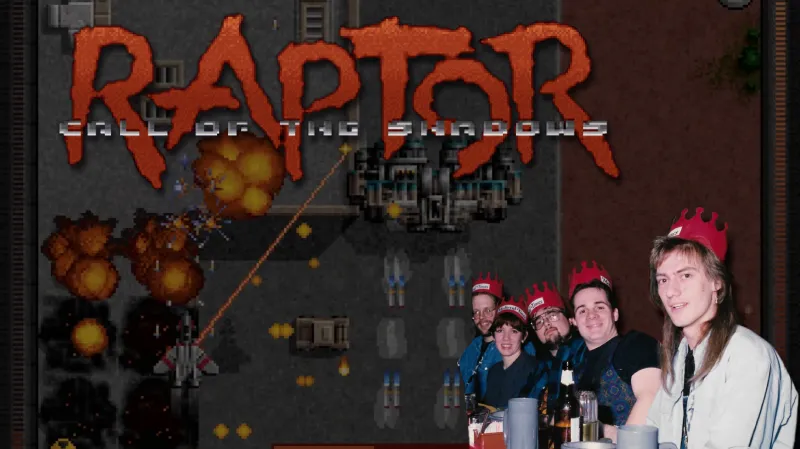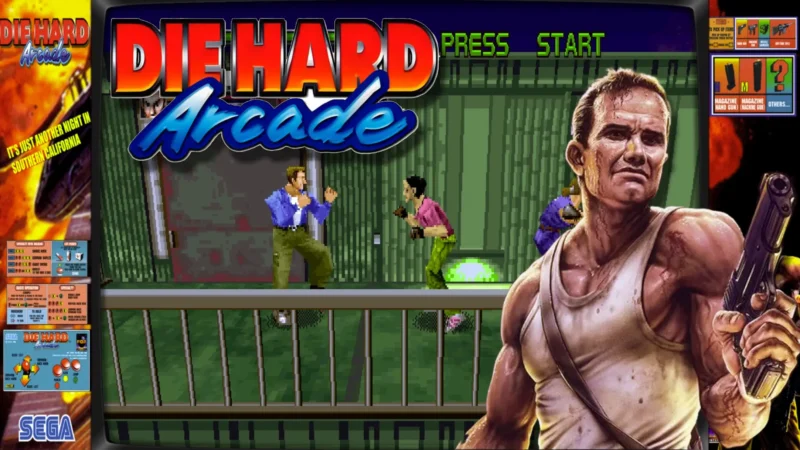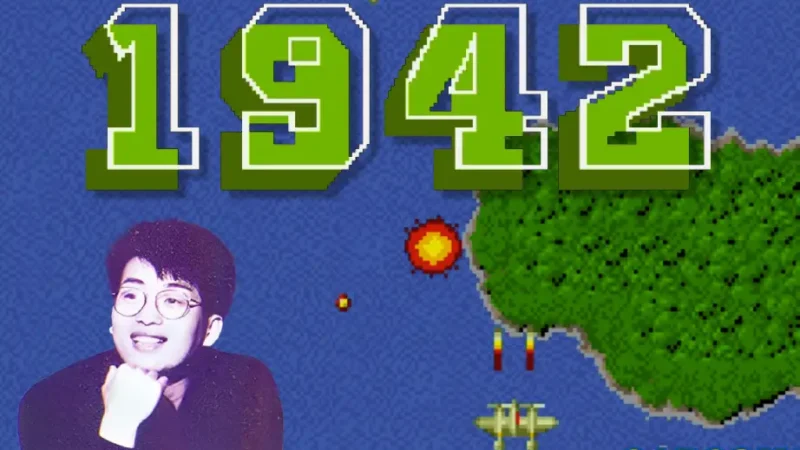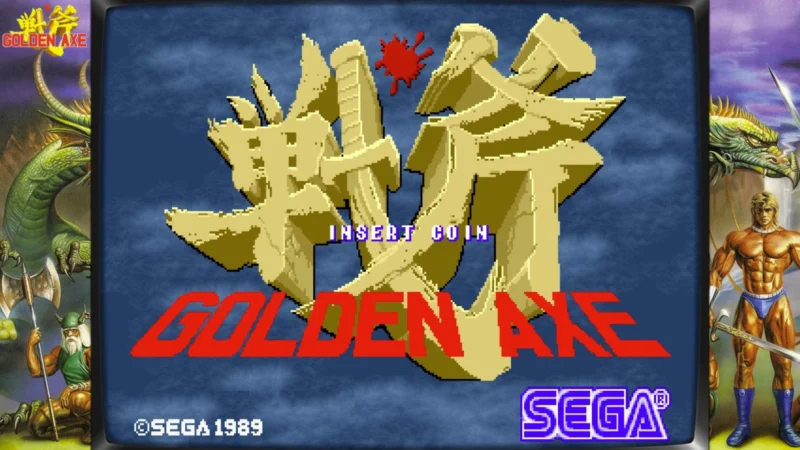X-Men Arcade: History & Development of a Konami Legend
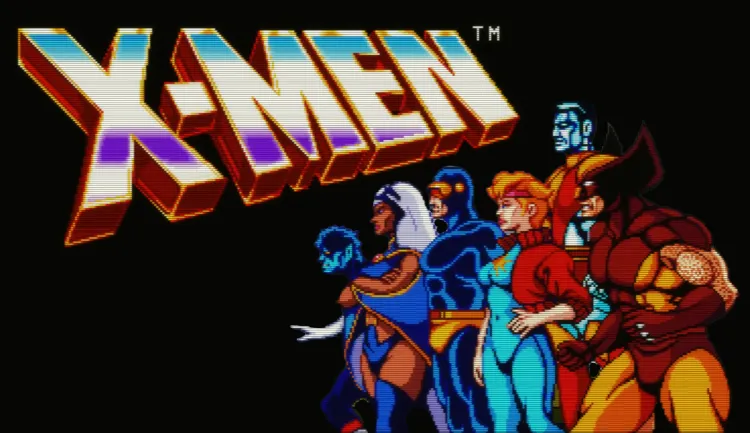
The X-Men arcade game is one of the most iconic arcade cabinets in gaming history, boasting a massive 6-player model that was impossible to miss in any arcade. The game was an arcade hit when it launched in 1992, but the development of the game and its developers at Konami is hidden in the shadows of gaming history.

Here’s what we know about the incredible development of the X-Men arcade game.
A Brief History of Konami
Konami started as a jukebox rental and repair business in 1969 by Kagemasa Kōzuki.1 Before being called Konami, it was called Leijac Co. The name Konami came from a combination of the names of the other founding members of the company, Kagemasa Kōzuki, Yoshinobu Nakama, and Tatsuo Miyasako
In the late 1970’s, Konami saw the rise of video arcades in Japan and pivoted the business to begin making video arcade games. In 1981, they hit it big with two games. The first was a horizontal shooter called Scramble. It received commercial and critical acclaim, which put Konami on the map. But another game about a little frog trying to get to a lily pad skyrocketed the company’s fortunes. Frogger, which was developed by Konami and published by Sega, was an unexpected hit that became one of the highest grossing arcade games in North America in 1981.2
Konami would use that momentum to bring a plethora of hits to arcades. Q-Bert, Track & Field, Gradius, Contra, and so many other amazing titles would take the world by storm in the 1980’s. Riding this incredible wave of success, Konami started to explore new opportunities to increase the popularity of arcade games.

Licensing X-Men Started with Some Turtles
Broadening the appeal of video games and making arcade cabinets stand out in what was becoming a crowded industry became a main focus for Konami in the late 1980’s. In 1989, Konami released a video game with a tie-in to a massive cultural hit: Teenage Mutant Ninja Turtles. The Teenage Mutant Ninja Turtles arcade game was a 4-person beat-em up featuring characters from the comic books and TV show. The game quickly became Konami’s new top-grossing arcade cabinet.3

But Konami didn’t stop there. They brought another cultural icon, The Simpsons, to arcades in 1991. Again, a 4-player beat-em up, with characters from the show, The Simpsons became one of the top grossing arcade cabinets in the United States that year.
With two blockbusters under its belt in less than 3 years, Konami had to outdo itself. But what franchise could it bring to the table that could compete with The Simpsons and Teenage Mutant Ninja Turtles?
X-Men Arcade Goes Into Development
Before Teenage Mutant Ninja Turtles hit arcades, Konami released a beat ’em up called Crime Fighters, in 1989. While the game wasn’t a huge hit, it created the fundamentals for all of the beat ’em ups that followed. At the helm of Crime Fighters was C. Lee, a pseudonym that may have been used by a game designer named Shiyu Rimoto.

Quick Note: Researching the development of the X-Men arcade game was very hard because Konami was incredibly secretive about who their developers were and often had them use pseudonyms instead of their real names in the credits of games. This was because Konami didn’t want other developers to poach their talent.
How Konami got the Rights to X-Men
The details of how and when Konami got the license for X-Men is unclear, but what is known is that the game was based on the short-lived cartoon pilot of an X-Men show called Pryde of the X-Men (which came out in 1989, three years before the series rebooted in the classic X-Men cartoon we know today.) This implies that Konami got the rights for X-Men sometime around 1989-1990.
The cartoon pilot was a bit rough, and the main characters in it were very different than the ones that would come later in the 1992 version of the cartoon, especially the emphasis on Dazzler, and Wolverine having a very heavy Australian accent (a premonition that Hugh Jackman would later become the living embodiment of the character, perhaps?)
The X-Men Arcade Team
With the arcade licensing rights to the X-Men in hand and concept for the game, Konami put together a team to bring the game into reality. Leading the team would be Crime Fighters programmer/producer C. Lee. Also brought into the team would be Yuji Asano and Kazuya Hattori, who did the visual and graphic design for Teenage Mutant Ninja Turtles. These two obviously knew how to translate a character from a cartoon to a game. The characters in the game would almost perfectly match the look of the “Pride of the X-Men” cartoon.

Helping out the team in bringing X-Men to life was also Teenage Mutant Ninja Turtles Director Hideki Ohyama (who is later credited as having the role of “Young Man” on the team.)
The end credits of the game list the following people as developers of X-Men arcade:5
- Chief Producer and Director: Lee
- Visual Design: K. Hattori, Captain OE
- Design Works: Y. Asano, Professor, M. Nomi
- Hardware Designer: H. Matsuura, S. Yasuda
- Cabinet Design: Rasher Y. Tamura
- Sound Producer and Composer: S. Fukami
- Music Coproduced and Composer: Y. Technouchi
- Guest Composer: J. Nakano
- Support Composer: A Hashimoto
- Special Thanks: Y. Hatano
- Young Man: H. Ohyama
While the exact details surrounding the development of the game are unknown, what is known about Konami at the time was that the working conditions were stressful. Konami Designer Masaaki Kukino described the working environment as “everyone in Konami’s development department worked late into the night, so I too pulled multiple all-nighters as an artist after being hired, but honestly, everyone was so driven that it was kinda fun.”4
The production of X-Men arcade most-likely overlapped with the development of Teenage Mutant Ninja Turtles: Turtles in Time, the sequel to the original arcade hit. Turtles in Time would launch a year before X-Men. Interestingly, Ohyama, Asano, and Hattori did not appear to work on the sequel to Teenage Mutant Ninja Turtles, and instead did the development of X-Men arcade.
X-Men Arcade Characters and Plot
Since it was based on the cartoon pilot of Pryde of the X-Men, the game would incorporate the look and feel of that cartoon in the game. Playable characters would include the main characters of the show: Cyclops, Wolverine, Colossus, Storm, Nightcrawler and Dazzler.

The plot was relatively simple. The X-Men are trying to save Professor X from Magneto, who has taken Professor X to Island M (mild spoiler: he’s not there!)
To save Professor X, the X-Men need to complete 8 different levels, each getting harder than the last. Each level has a final boss, along with levels 3-7 having mid-level bosses.
Villains included Magneto (obviously), Juggernaut, Mystique, Pyro, White Queen, Blob, Nimrod, Wendigo, and Living Monolith who would all serve as bosses or mid-level bosses throughout the game. Sentinels (which are human-sized robots in the arcade game) are also thrown in as normal villains to take on throughout the levels.
The finely detailed levels of the game would rival those from the previous Konami beat ’em ups and include fully beautiful, dynamic backgrounds thanks to the artwork of K. Hattori, Captain OE, Y. Asano, and M. Nomi.

Going Big with 6 Players and 2 Monitors
Given Konami’s previous success with 4-player co-op cabinets, the team decided to offer a 6-player version of the game (along with a small 2-player model and a 4-player standard cabinet), which would allow all of the playable characters to appear on screen at once. Moving from 4 to 6 players would require a lot more than just adding two more controllers.
Fitting 6 playable characters in a co-op game required a monitor larger than anything that was currently available. To get around this, the team used two monitors in the arcade cabinet. While this sounds simple, it was actually quite complex. Because CRT monitors were rounded and didn’t have straight sides, putting two of them side-by-side would result in a large bezel between them, breaking up the gameplay.
The way X-men arcade got around having a wide screen was to have one monitor mounted to the back of the machine, which faced forward toward the players. Next to that monitor is a mirror that reflects a second monitor that is mounted in the bottom of the cabinet, facing up. The reflection of the mirror blends with the forward-facing monitor to create one (semi)seamless widescreen monitor. (Arcade operators would need to adjust these mirrors to get the blend as good as possible). While other lesser-known arcade games would incorporate up to three monitors in a similar configuration, the dual-monitor setup and 6-player action made X-Men arcade one of the largest arcade cabinets in any arcade it was found.

Photo Credit: Arcade Museum Forums
Aside from the massive 6-player cabinet, Konami also created a 4-player cabinet and a smaller 2-player cabinet, which seem more reasonable, but are probably less fun and exciting.
X-Men Arcade Gameplay
Players had typical attack and jump buttons, but could also perform a special mutant attack with a Mutant Power button. The mutant power attack would be considerably stronger than other attacks, but it would also cost the player 3 of their 10 health bars each time it was used.
The X-Men arcade mutant attacks for each character were:
- Cyclops: Laser Beam
- Colossus: Energy Spark
- Wolverine: Adamantium Laser Blade
- Storm: Lightning Tornado
- Nightcrawler: Teleportation
- Dazzler: Sonic Light Blast

Another gameplay addition was the ability to attack enemies who had fallen on the ground. These ground attacks could destroy an enemy that had been simply knocked to the ground. Each X-Men had a different ground attack that suited their mutant powers, such as Storm electrocuting enemies.
The number of enemies on the screen would depend on the number of players in the game at one time, making the game playable with only 1 player, but not super easy with 6. The gameplay balance had to be honed in to get this just right. However, with 6 players, the boss battles are still mono-e-mono. To compensate for this, the bosses have more starting health depending on how many players are in the game.
Memorable X-Men Arcade Quotes
Apart from the massive 6-player cabinet, the other thing X-Men arcade would become famous for were its memorable quotes.
Magneto quotes:
- “X-Men! Welcome to die!”
- “X-Men! Come dead!”
- “X-Men come to die!”
- “X-Chickens!”
- “I am Magneto, master of magnet!”
- “You shall meet with my wrath!”
- “You are helpless against my power.”
- “Shieeeeeld…”
Pyro: “Pyro will turn you to toast!”
Blob: “Nothing moves the Blob!”
Professor X: “Go and rescue Kitty from the cave!”
Professor X: “Magneto is planning to attack Earth from his asteroid base. You must foil his plan before it’s too late. Go after the giant Sentinel.”
Professor X: “Alas, that was Mystique, not Magneto. Magneto is in another place.”
White Queen: “The White Queen welcomes you to die!”
Juggernaut: “Juggernaut will flatten you.”
Mystique: “Aha! You fell into our trap!”
“Professor X” (Mystique): “X-Men, nice job. Magneto is over there. Follow me.”
“Magneto” (Mystique): “I am Magneto. You are nothing!”
X-Men Arcade’s Release and Reception
X-Men arcade released in North America in March of 1992, a few months ahead of the Japanese launch in June of that year. In the US, it was a massive hit, and was the highest grossing deluxe cabinet from May to October 1992. It was in October of 1992 that the game got another major boost. X-Men: The Animated Series debuted in the US on October 31, 1992. The rebooted cartoon featured better animation, fantastic voice acting, and an arguably stronger lineup of X-Men (sorry Dazzler) than the 1989 pilot. With the rebooted, show, X-Men became a huge cultural phenomenon, spawning many more video games, including X-Men: Children of the Atom, which used the voice acting from X-Men: The Animated Series.

And like the two Teenage Mutant Ninja Turtles games before it, X-Men arcade received glowing reviews. It was nominated for “most played video game (dedicated)” and “most innovative new technology” at the 1992 Amusement & Music Operators Association (AMOA) Game Awards. It would lose “most played video game” to Street Fighter II: Champion Edition.
In 2007, GameSpot declared X-Men arcade one of the Greatest Games of All Time.6
No Home Conversion Until Decades Later
Unfortunately for console players, software developer (and license hog) LJN held the rights to the X-Men and many other Marvel properties on console, so Konami was unable to bring the X-Men arcade game to any home consoles when it was most popular in arcades. Instead, it wouldn’t be until 2010 that a home port was released on the Playstation Network and Xbox Live Arcade. In 2013, both services delisted the game. A mobile app was also created but was delisted around the same time.
X-Men arcade brought together a fantastic IP with a tried-and-true team that had experience in the beat ’em up genre to create what is now considered a classic by many. Hopefully we’ll be able to once again get a quality home port one of these days.
References
- Konami Wikipedia Page
- Frogger Wikipedia Page
- Teenage Mutant Ninja Turtles (arcade game) Wikipedia Page
- https://www.timeextension.com/features/interview-konami-legends-reveal-the-secrets-of-the-arcade-hit-factory
- X-Men Arcade end credits
- GameSpot: Greatest Games of All Time

